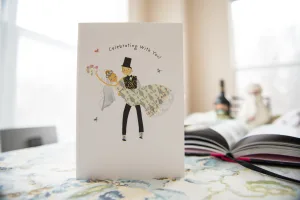How to deal with Irish Travellers? – Detailed Guide!

Irish Travellers, sometimes called as Pavees or Mincéirs, are a historically nomadic ethno-cultural community from Ireland. They are primarily English speakers, though many also speak Shelta, a blended English and Irish language. In terms of religion, the majority of Irish Travellers are Catholics, as is the case in the Republic of Ireland. They are one of several “Traveller” groups, with the Scottish Travellers being a closely related group. Irish Travellers are not genetically connected to the Romani, despite the fact that they are sometimes referred to as “Gypsies.” Travellers are of Irish ancestry, according to genetic study, and they separated from the settled Irish population in the 1600s, during the Cromwellian occupation of Ireland. Travellers are the result of centuries of separation.
Irish travellers speak English and one of two Shelta dialects, which have been dated to the 18th century but could be older. Cant is an amalgamation of English and Shelta that comes from the Irish language. The vocabulary of the Irish Traveller is based on pre-13th-century Gaelic idioms, with a ten percent Indian origin Romani language lexicon. The origin of Shelta is complicated because it combines English and Irish grammar. The language is primarily composed of Irish lexicon and is characterised as a grammar-lexicon language with English-based grammar. Shelta existed as early as the 13th century, according to Gaelic language scholar Kuno Meyer and Romani language linguist John Sampson, 300 years before the first Romani populations arrived in Ireland or Britain.
The beginnings of Irish Travellers as a unique group are surrounded by different theories and oral narratives. Research has been hampered by the fact that the Traveller community appears to have no written records of its own, with oral tradition via storytelling serving as the major means of disseminating its own history and culture. Shelta and the Travellers have been documented since the 1830s, however knowledge of Irish Travellers may be traced back to the 1100s and 1500s. Around 1551, King Edward VI issued a slew of anti-begging laws in England, many of which targeted Travellers. “Acte for tynckers and pedlers” was one of these decrees. Irish Travellers’ culture is similar to that of other mobile cultures in that it includes characteristics such as self-employment and family life. The number of Irish Travellers in the Republic of Ireland was 30,987 in 2016, up from 29,495 in 2011. In 2006, there were 22,369. Northern Ireland is home to another 1,700 to 2,000 people. The fertility rate of Irish Travellers is higher than that of the broader Irish population. According to the Central Statistics Office of Ireland, 44.5 percent of Traveller women aged 40–49 had five or more children in 2016, compared to 4.2 percent of women in this age group overall. According to the 2006 Irish census, 20,975 people live in urban areas and 1,460 live in rural regions. With a population of under 0.5 percent, some localities were discovered to have a higher proportion of Travellers, with high concentrations in Clare.
Lifestyle of Irish Travellers

Because they are a nomadic people living in a stable culture, Irish travellers are regarded as peculiar, eccentric, and even strange. They are racially diverse from the Irish because they are originally from Ireland. They travel for the majority of their lives. They work outside with no one but themselves as their supervisors. Theirs is a society built on movement, with a world and culture built around it. It is in their nature for them to travel. They are unable to sit still for long periods of time. The Irish Travellers are a nomadic group native to Ireland who may have been present when the Celts arrived more than 2,000 years ago. Or perhaps not. The beginnings of the group are a hot topic of discussion. The Travellers, often known as Tinkers, are Ireland’s largest minority group today.
Discrimination and Prejudice among Irish Travelers
According to a 2011 survey conducted by the Economic and Social Research Institute of Ireland, there is widespread ostracism of Travellers in Ireland, and the report concluded that this could harm Travellers’ long-term prospects, as they “need the intercultural solidarity of their settled community neighbours.” They are too small a minority, i.e., 0.5 percent, to exist in any significant way without ongoing and supporting personal contact with their settled community neighbours. In 2016, the United States’ Country Reports on HR Practices for the United Kingdom stated that Irish Travellers in the country had experienced discrimination on “racial or ethnic grounds,” and that the High Court had ruled that the government had illegally discriminated against Travellers by unlawfully subjecting planning applications to racial and ethnic profiling.
Health of Irish Travelers
Irish Travellers’ health is substantially worse than that of the broader Irish population. According to research published in Ireland in 2007, more than half of all Travellers do not live past the age of 39. In a 1987 government report, it was discovered that they have a high mortality rate from birth through old age, owing to accidents, metabolic and congenital disorders, as well as other main causes of death. In comparison to settled women, female travellers had a higher mortality rate.








